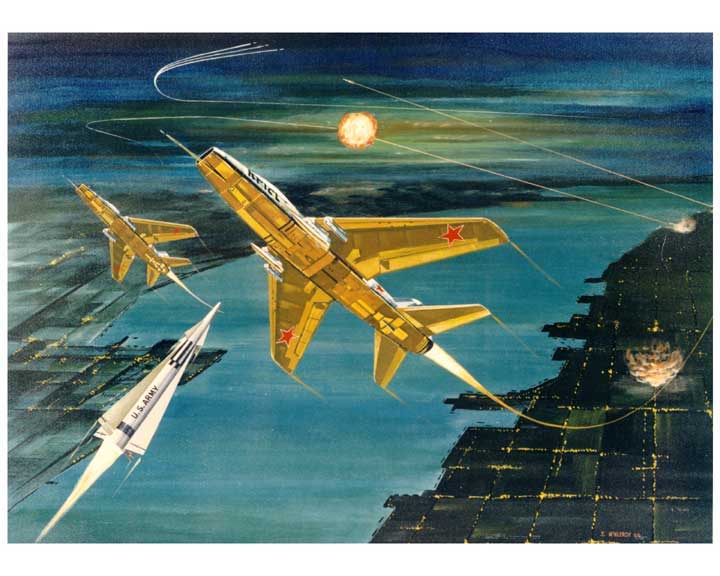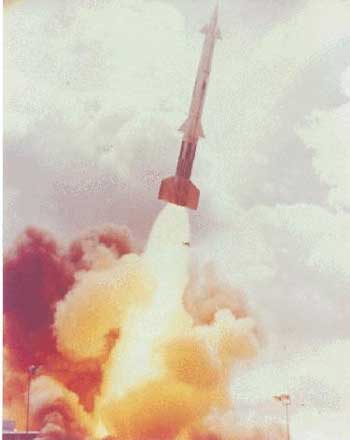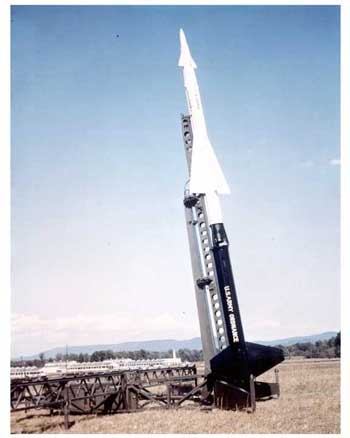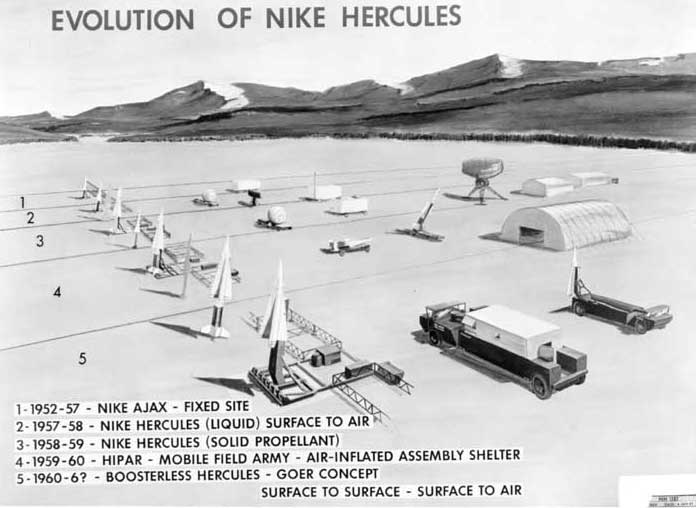- Nike Hercules at Designation-Systems.net
- Nike Missile page
- Nike Historical Society
- Nike Hercules
- A destroyed Nike-site in germany
.


http://www.redstone.army.mil/history/nikesite/nikeherc.html
The Nike-Hercules Missile, designation MIM-14 (initially SAM-N-25), was a solid fuel propelled surface-to-air missile, used by US and NATO armed forces for high and medium altitude air defense. It could also be employed in a surface-to-surface role. The Nike-Hercules system, a follow-up to the Nike-Ajax missile, was developed during the Cold War to destroy enemy bombers and enemy bomber formations, as well as serve as an anti-ballistic missile system. Western Electric, Bell Laboratories, and Douglas Aircraft Company were the chief contractors for the missiles. In addition to the US Army, systems were sold to West Germany, The Netherlands, Belgium and Greece, with deployments in West Germany beginning in 1963. Nike-Hercules missile systems were also sold to Japan, which subsequently upgraded the internal guidance systems by replacing the original vacuum tube systems with transistorized ones.
The Nike-Hercules Missile could be fitted with either a nuclear warhead, W-31 type, or a conventional T-45 fragmenting warhead. The missile is 41 feet 6 inches (12.6 m) long with a wingspan of 6 feet 2 inches (1.9 m). 145 batteries of missiles were deployed during the cold war. The missile had a range of about 77 miles (110 km). Because of the missile's effectiveness against certain ICBMs, it was made a part of the SALT I treaty.
When it became apparent that the greatest threat to US National defense was from missiles instead of bombers, most Nike-Hercules units were deactivated. All Nike-Hercules missile batteries in the continental United States, with the exception of the ones in Florida and Alaska were deactivated by April 1974. These units were deactivated around 1979.
The US Army continued to use Nike-Hercules as a front-line air defense weapon in Europe until the early 1980s, when Patriot missile batteries were deployed. Other NATO units from West Germany, The Netherlands, Belgium, and Greece, continued to use the Nike-Hercules for high-altitude air defense until the late 1980s. With the collapse of communism in Eastern Europe, the units were deactivated.
The Patriot missile replaced the Nike-Hercules Missile in the high and medium altitude air defense role. Its chief advantage over the Nike-Hercules system was in mobility; while a Nike-Hercules site could be established in days if necessary, Patriot sites can be established in hours. Patriot also uses a more advanced radar system and has better missile target tracking.
Specifications
| Missile | Nike Hercules |
| Length | 12.53 m overall 8.18 m second stage |
| Diameter | 0.80 m booster 0.53 m second stage |
| Fin span | 3.50 m booster 1.88 m second stage |
| Mass | 4850 kg at launch 2505 kg second stage |
| Maximum speed | Mach 3.65 (ca. 4 470 km/h) |
| Range | 140 km |
| Ceiling | 45,700 m |
| First stage | Hercules M42 solid-fueled rocket cluster (4x M5E1 Nike boosters) 978 kN (220,000 lbf) total |
| Second stage | Thiokol M30 solid-fueled rocket 44.4 kN (10,000 lbf) |
| Warhead conventional | T-45 HE warhead weighing 1106 lb (500 kg) and containing 600 lb (272 kg) of HBX-6 M17 blast-fragmentation |
| Warhead nuclear | W-31 nuclear 2 kt (M-97) 20 kt (M-22) 40 kt (M-23) |


Nike Zeus and Nike Ajax versions

Links
A photo of the NATO missile range on the Island of Crete taken on the Hipar radar tower in 1969.
Photograph taken at the Crete missile range, second to the last launch by the 118th, Royal Dutch Air Force Squadron in 1987.
| Ancient Greece
Science, Technology , Medicine , Warfare, , Biographies , Life , Cities/Places/Maps , Arts , Literature , Philosophy ,Olympics, Mythology , History , Images Medieval Greece / Byzantine Empire Science, Technology, Arts, , Warfare , Literature, Biographies, Icons, History Modern Greece Cities, Islands, Regions, Fauna/Flora ,Biographies , History , Warfare, Science/Technology, Literature, Music , Arts , Film/Actors , Sport , Fashion --- |
Retrieved from "http://en.wikipedia.org"
All text is available under the terms of the GNU Free Documentation License

